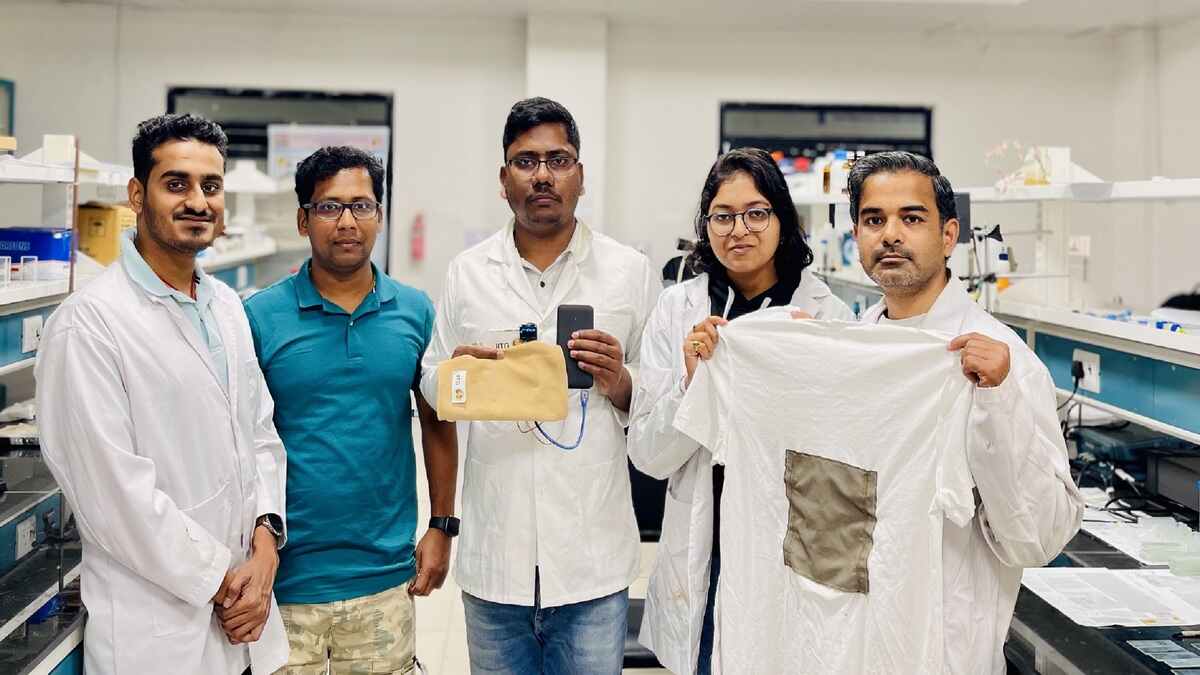IIT Guwahati develops flexible heating fabric to protect from extreme cold
Vaishnavi Shukla | February 13, 2025 | 01:03 PM IST | 2 mins read
The IIT Guwahati-designed textile is designed to protect wearers from health risks such as weakened immunity, breathing issues, and blood clotting caused due to low temperatures.

NEW DELHI: The Indian Institute of Technology (IIT) Guwahati researchers have developed a new fabric that is water-repellent and conductive, and converts electricity and sunlight into heat. The cloth is designed to protect wearers from extreme colds and prevent health risks such as arterial blood clotting due to hemoconcentration, weakened immunity, and breathing issues caused by low temperatures.
The research findings have been published in the Nano Micro Small journal, in a paper co-authored by Uttam Manna from the department of chemistry at IIT Guwahati, and his research team members, including – Debasmita Sarkar, Haydar Ali, Rajan Singh, Anirban Phukan, Chittaranjan Mishra, and Roy P Paily from the department of electronics and electrical engineering, IIT Guwahati.
Extreme low temperatures could lead to several health problems that can be even fatal. Studies indicate the death caused by extreme cold tempreatures is more than those caused by extreme heat. One can protect themselves from extreme cold using a room heater which requires constant power or layered clothing which is often bulky.
The new conductive textile will work as a lightweight and flexible alternative. However, its existing version does have limitations such as poor durability, high power consumption, and is vulnerable to water exposure.
Also read IIT Guwahati inaugurates Tree-Based Enterprise Incubation Centre to develop sustainable enterprises
Researchers develop ways to make fabric conductive
To overcome the challenges faced by conductive textiles, the team made a strategic approach by spraying ultra-thin and clean silver nanowires onto cotton fabric to make it conductive. Moreover, these nanowires are a thousand times thinner than human hair allowing electricity to flow through the textile and generate heat by remaining soft and flexible.
“Due to its exceptional electrical conductivity and the ability to convert both electricity and sunlight into heat, silver nanowires were chosen for this experiment. The low electrical resistance of silver allows the electrothermal conversion at low applied voltage and eliminating the risk of electrocution,” the IIT Guwahati statement said.
The textile can convert electricity from a small rechargeable battery or solar energy into heat and can maintain temperature between 40°C and 60°C for over 10 hours.
Speaking about the developed textile, Uttam Manna said, “Our textile is self-cleanable, breathable, and flexible and can easily be scaled up. Its durability and long-lasting performance make it useful in a range of applications that require controlled heating.”
Follow us for the latest education news on colleges and universities, admission, courses, exams, research, education policies, study abroad and more..
To get in touch, write to us at news@careers360.com.